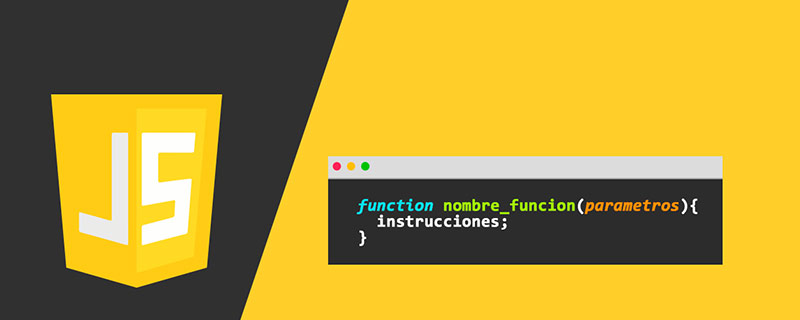Node.js is based on JavaScript engine v8 and is single-threaded. Node.js uses asynchronous programming methods similar to JavaScript on the Web to handle blocking I/O operations. Reading files, accessing databases, network requests, etc. in Node.js may all be asynchronous. For those new to Node.js or developers migrating to Node.js from other language backgrounds, asynchronous programming is a painful part. This chapter will introduce you to all aspects of Node.js asynchronous programming from the simplest to the deeper. From the most basic callback to thunk, Promise, co to async/await planned for ES7.
First, let’s start with a specific example of asynchronous programming.
Get weather information for multiple IP locations
In the file ip.json, there is an array where we store several IP addresses, which are different visitors from different places. The content is as follows:
// ip.json
["115.29.230.208", "180.153.132.38", "74.125.235.224", "91.239.201.98", "60.28.215.115"]
I hope I can get the current weather for each IP location. Output the results to the weather.json file in the following format:
// weather.json
[
{ "ip": "115.29.230.208", "weather": "Clouds", "region": "Zhejiang" },
{ "ip": "180.153.132.38", "weather": "Clear", "region": "Shanghai" },
{ "ip": "74.125.235.224", "weather": "Rain", "region": "California" },
{ "ip": "60.28.215.115", "weather": "Clear", "region": "Tianjin" }
]
To organize our thoughts, we divide it into the following steps:
1. Read the ip address;
2. Get the geographical location of the IP based on the IP address;
3. Check the local weather based on geographical location;
4. Write the results to the weather.json file.
These steps are all asynchronous (reading and writing files can be synchronous, but as an example, asynchronous is used).
callback
First, we try to implement it in the way that Node.js API usually provides - passing a callback as an asynchronous callback without using any library. We will use three basic modules:
1.fs: Read the IP list from the file ip.json; write the result to the file;
2.request: used to send HTTP requests, obtain geo data based on IP address, and then obtain weather data through geo data;
3.querystring: used to assemble the url parameters for sending requests.
Create a new callback.js file and introduce these modules:
// callback.js
var fs = require('fs')
var request = require('request')
var qs = require('querystring')
Read the IP list in the file, call fs.readFile to read the file content, and then use JSON.parse to parse the JSON data:
...
function readIP(path, callback) {
fs.readFile(path, function(err, data) {
If (err) {
callback(err)
} else {
Try {
data = JSON.parse(data)
callback(null, data)
} catch (error) {
callback(error)
}
}
})
}
...
The next step is to use IP to obtain geo. We use request to request an open geo service:
...
function ip2geo(ip, callback) {
var url = 'http://www.telize.com/geoip/' ip
request({
url: url,
json: true
}, function(err, resp, body) {
callback(err, body)
})
}
...
Use geo data to get weather:
...
function geo2weather(lat, lon, callback) {
var params = {
lat: lat,
lon: lon,
APPID: '9bf4d2b07c7ddeb780c5b32e636c679d'
}
var url = 'http://api.openweathermap.org/data/2.5/weather?' qs.stringify(params)
request({
url: url,
json: true,
}, function(err, resp, body) {
callback(err, body)
})
}
...
Now that we have obtained the interfaces for geo and weather, we still have a slightly more complicated problem to deal with. Because there are multiple IPs, we need to read geo in parallel and read weather data in parallel:
...
function ips2geos(ips, callback) {
var geos = []
var ip
var remain = ips.length
for (var i = 0; i ip = ips[i];
(function(ip) {
ip2geo(ip, function(err, geo) {
If (err) {
callback(err)
} else {
geo.ip = ip
geos.push(geo)
remain--
}
If (remain == 0) {
callback(null, geos)
}
})
})(ip)
}
}
function geos2weathers(geos, callback) {
var weathers = []
var geo
var remain = geos.length
for (var i = 0; i
Geo = geos[i];
(function(geo) {
geo2weather(geo.latitude, geo.longitude, function(err, weather) {
If (err) {
callback(err)
} else {
weather.geo = geo
weather.push(weather)
remain--
}
If (remain == 0) {
callback(null, weathers)
}
})
})(geo)
}
}
...
Both ips2geos and geos2weathers use a relatively primitive method, remain to calculate the number of items waiting to be returned. If remain is 0, it means that the parallel request has ended, and the processing results are loaded into an array and returned.
The last step is to write the results into the weather.json file:
...
function writeWeather(weathers, callback) {
var output = []
var weather
for (var i = 0; i weather = weathers[i]
Output.push({
IP: weather.geo.ip,
Weather: weather.weather[0].main,
Region: weather.geo.region
})
}
fs.writeFile('./weather.json', JSON.stringify(output, null, ' '), callback)
}
...
By combining the above functions, we can achieve our goal:
...
function handlerError(err) {
console.log('error: ' err)
}
readIP('./ip.json', function(err, ips) {
if (err) {
handlerError(err)
} else {
ips2geos(ips, function(err, geos) {
if (err) {
handlerError(err)
} else {
geos2weathers(geos, function(err, weathers) {
if (err) {
handlerError(err)
} else {
writeWeather(weathers, function(err) {
if (err) {
handlerError(err)
} else {
console.log('success!')
}
})
}
})
}
})
}
})
哈哈,你妈这嵌套,你可能觉得这就是 JavaScript 异步的问题,说真的,嵌套不是 JavaScript 异步的真正问题所在。上面这段代码我们可以下面这样写:
...
function ReadIPCallback(err, ips) {
if (err) {
handlerError(err)
} else {
ips2geos(ips, ips2geosCallback)
}
}
function ips2geosCallback(err, geos) {
if (err) {
handlerError(err)
} else {
geos2weathers(geos, geos2weathersCallback)
}
}
function geos2weathersCallback(err, weathers) {
if (err) {
handlerError(err)
} else {
writeWeather(weathers, writeWeatherCallback)
}
}
function writeWeatherCallback(err) {
if (err) {
handlerError(err)
} else {
console.log('success!')
}
}
readIP('./ip.json', ReadIPCallback)
好了,这是我们 callback.js 的全部内容。运行:
node callback.js
将会生成 weater.json 文件:
[
{
"ip": "180.153.132.38",
"weather": "Clear",
"region": "Shanghai"
},
{
"ip": "91.239.201.98",
"weather": "Clouds"
},
{
"ip": "60.28.215.115",
"weather": "Clear",
"region": "Tianjin"
},
{
"ip": "74.125.235.224",
"weather": "Clouds",
"region": "California"
},
{
"ip": "115.29.230.208",
"weather": "Clear",
"region": "Zhejiang"
}
]
Then what’s the real problem?
Of course it is a problem of asynchronous. Asynchronous essentially has to deal with three things:
1. When the asynchronous operation ends, it needs to be notified back. Callback is a solution;
2. The results generated asynchronously need to be passed back. Callback accepts a data parameter and passes the data back;
3. What should I do if an asynchronous error occurs? Callback accepts an err parameter and returns the error.
But have you found a lot of repetitive work (various callbacks)? Is there anything wrong with the above code? Please look forward to the continuation of this article.
 Vercel是什么?怎么部署Node服务?May 07, 2022 pm 09:34 PM
Vercel是什么?怎么部署Node服务?May 07, 2022 pm 09:34 PMVercel是什么?本篇文章带大家了解一下Vercel,并介绍一下在Vercel中部署 Node 服务的方法,希望对大家有所帮助!
 node.js gm是什么Jul 12, 2022 pm 06:28 PM
node.js gm是什么Jul 12, 2022 pm 06:28 PMgm是基于node.js的图片处理插件,它封装了图片处理工具GraphicsMagick(GM)和ImageMagick(IM),可使用spawn的方式调用。gm插件不是node默认安装的,需执行“npm install gm -S”进行安装才可使用。
 一文解析package.json和package-lock.jsonSep 01, 2022 pm 08:02 PM
一文解析package.json和package-lock.jsonSep 01, 2022 pm 08:02 PM本篇文章带大家详解package.json和package-lock.json文件,希望对大家有所帮助!
 怎么使用pkg将Node.js项目打包为可执行文件?Jul 26, 2022 pm 07:33 PM
怎么使用pkg将Node.js项目打包为可执行文件?Jul 26, 2022 pm 07:33 PM如何用pkg打包nodejs可执行文件?下面本篇文章给大家介绍一下使用pkg将Node.js项目打包为可执行文件的方法,希望对大家有所帮助!
 分享一个Nodejs web框架:FastifyAug 04, 2022 pm 09:23 PM
分享一个Nodejs web框架:FastifyAug 04, 2022 pm 09:23 PM本篇文章给大家分享一个Nodejs web框架:Fastify,简单介绍一下Fastify支持的特性、Fastify支持的插件以及Fastify的使用方法,希望对大家有所帮助!
 node爬取数据实例:聊聊怎么抓取小说章节May 02, 2022 am 10:00 AM
node爬取数据实例:聊聊怎么抓取小说章节May 02, 2022 am 10:00 AMnode怎么爬取数据?下面本篇文章给大家分享一个node爬虫实例,聊聊利用node抓取小说章节的方法,希望对大家有所帮助!
 手把手带你使用Node.js和adb开发一个手机备份小工具Apr 14, 2022 pm 09:06 PM
手把手带你使用Node.js和adb开发一个手机备份小工具Apr 14, 2022 pm 09:06 PM本篇文章给大家分享一个Node实战,介绍一下使用Node.js和adb怎么开发一个手机备份小工具,希望对大家有所帮助!
 图文详解node.js如何构建web服务器Aug 08, 2022 am 10:27 AM
图文详解node.js如何构建web服务器Aug 08, 2022 am 10:27 AM先介绍node.js的安装,再介绍使用node.js构建一个简单的web服务器,最后通过一个简单的示例,演示网页与服务器之间的数据交互的实现。


Hot AI Tools

Undresser.AI Undress
AI-powered app for creating realistic nude photos

AI Clothes Remover
Online AI tool for removing clothes from photos.

Undress AI Tool
Undress images for free

Clothoff.io
AI clothes remover

AI Hentai Generator
Generate AI Hentai for free.

Hot Article

Hot Tools

ZendStudio 13.5.1 Mac
Powerful PHP integrated development environment

Safe Exam Browser
Safe Exam Browser is a secure browser environment for taking online exams securely. This software turns any computer into a secure workstation. It controls access to any utility and prevents students from using unauthorized resources.

DVWA
Damn Vulnerable Web App (DVWA) is a PHP/MySQL web application that is very vulnerable. Its main goals are to be an aid for security professionals to test their skills and tools in a legal environment, to help web developers better understand the process of securing web applications, and to help teachers/students teach/learn in a classroom environment Web application security. The goal of DVWA is to practice some of the most common web vulnerabilities through a simple and straightforward interface, with varying degrees of difficulty. Please note that this software

SublimeText3 English version
Recommended: Win version, supports code prompts!

VSCode Windows 64-bit Download
A free and powerful IDE editor launched by Microsoft






